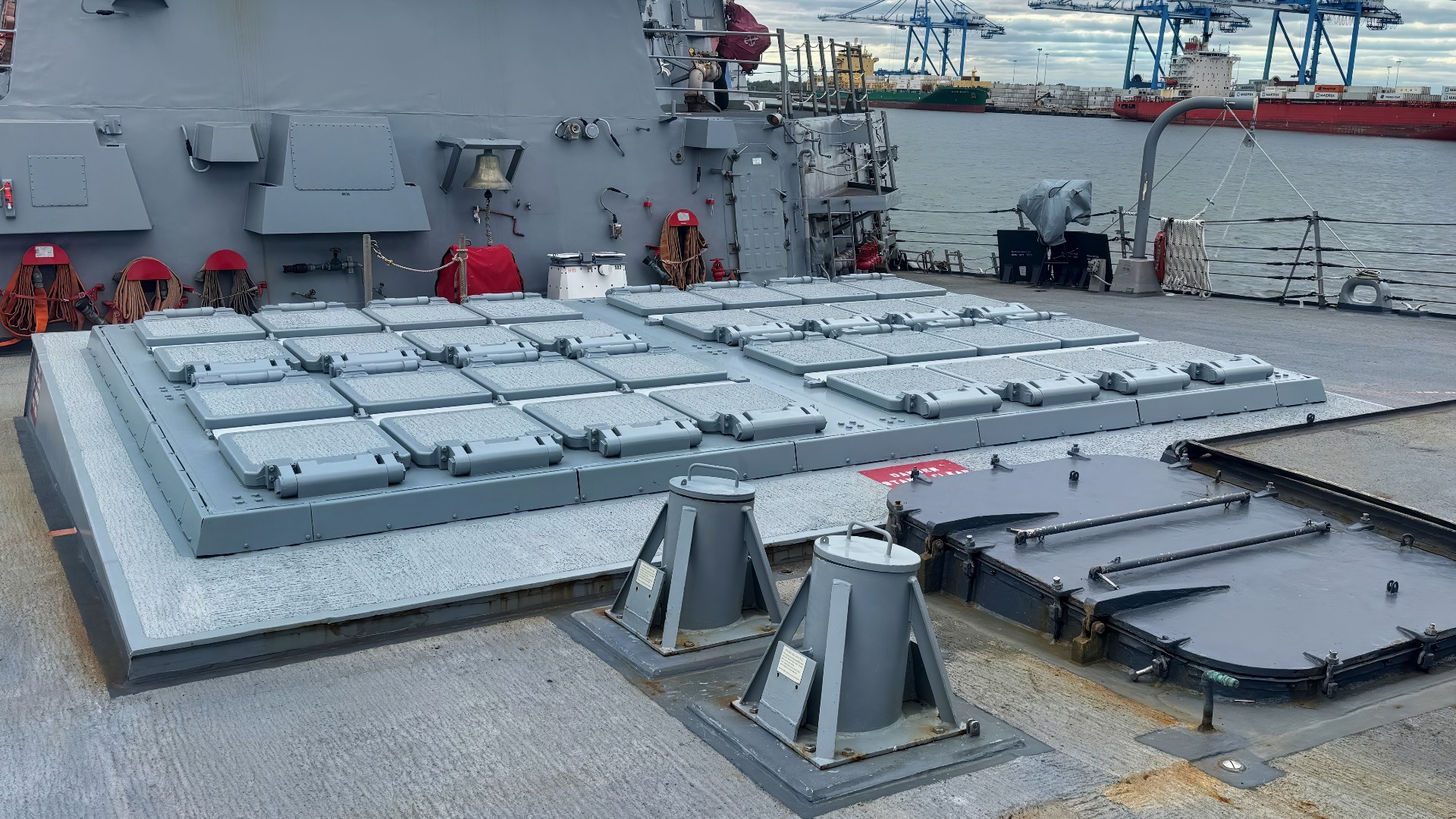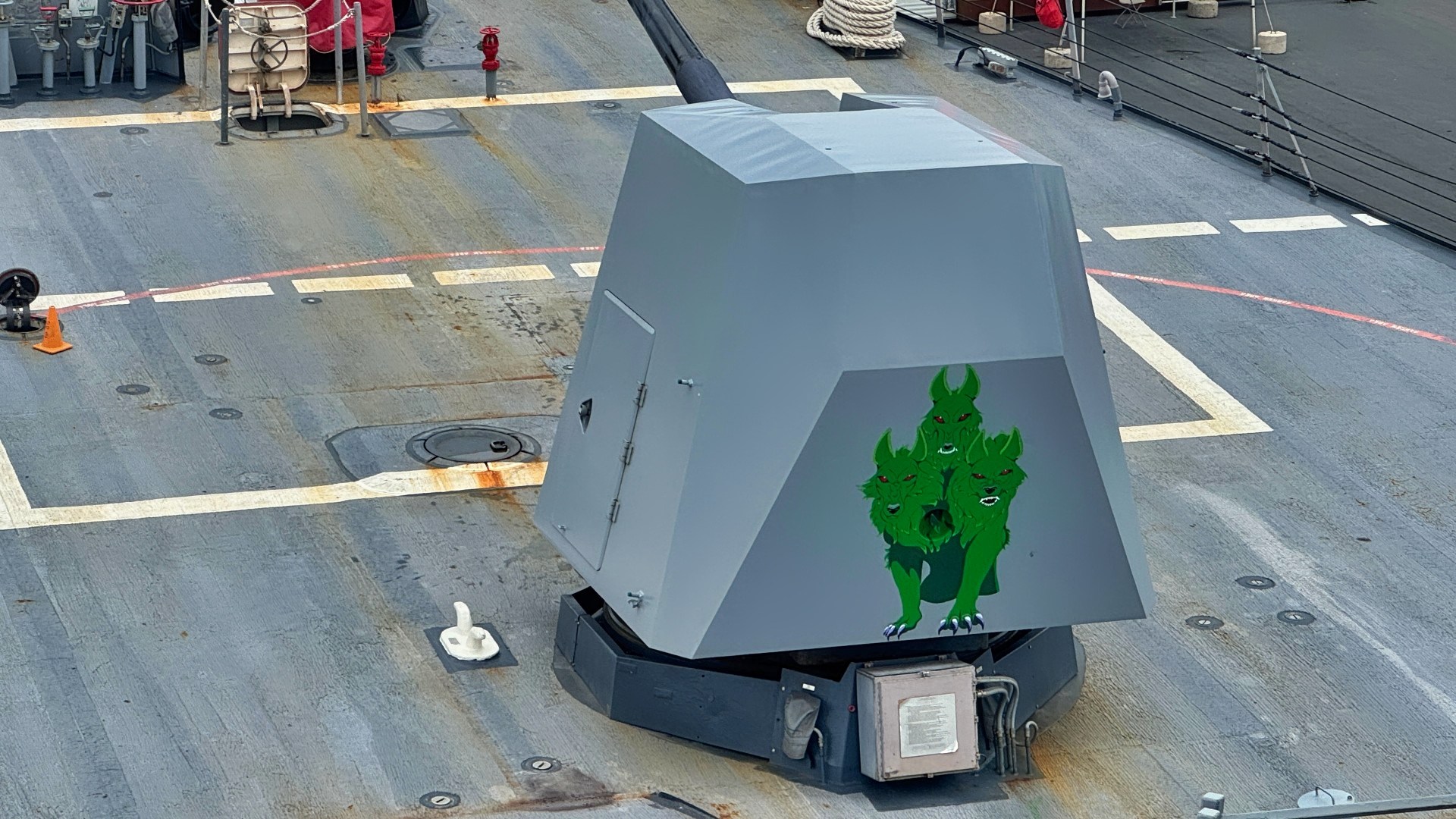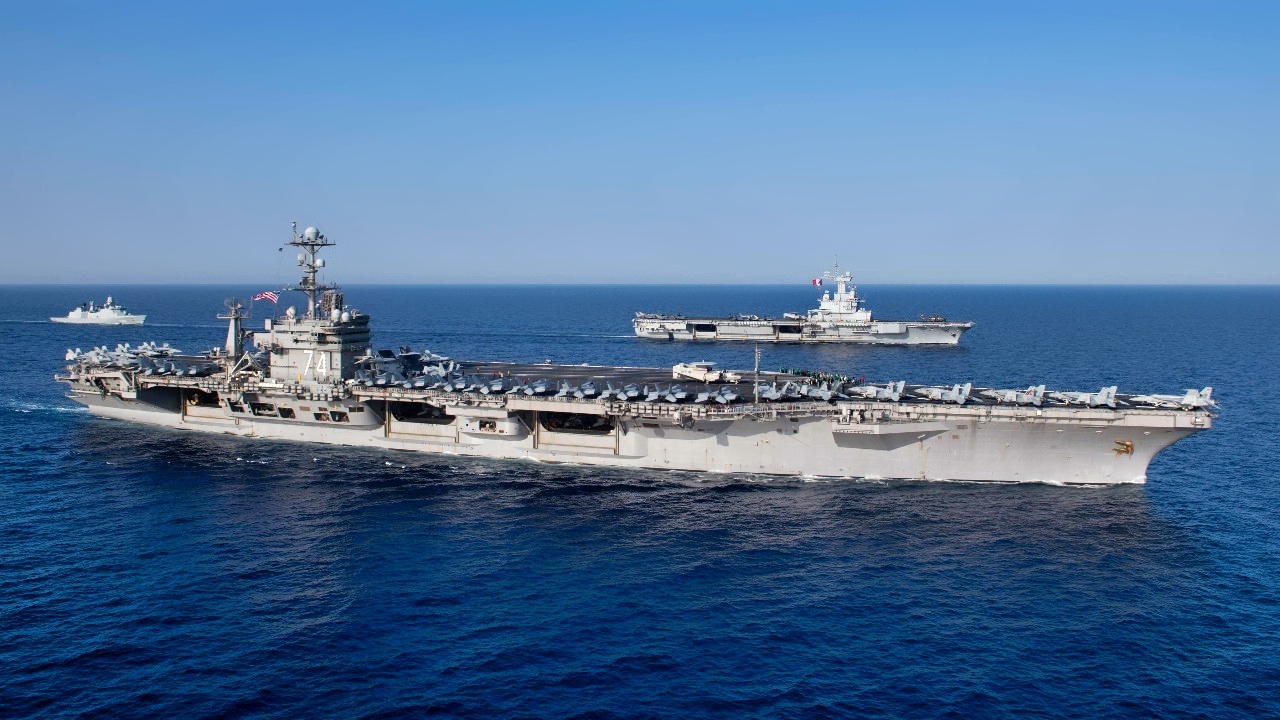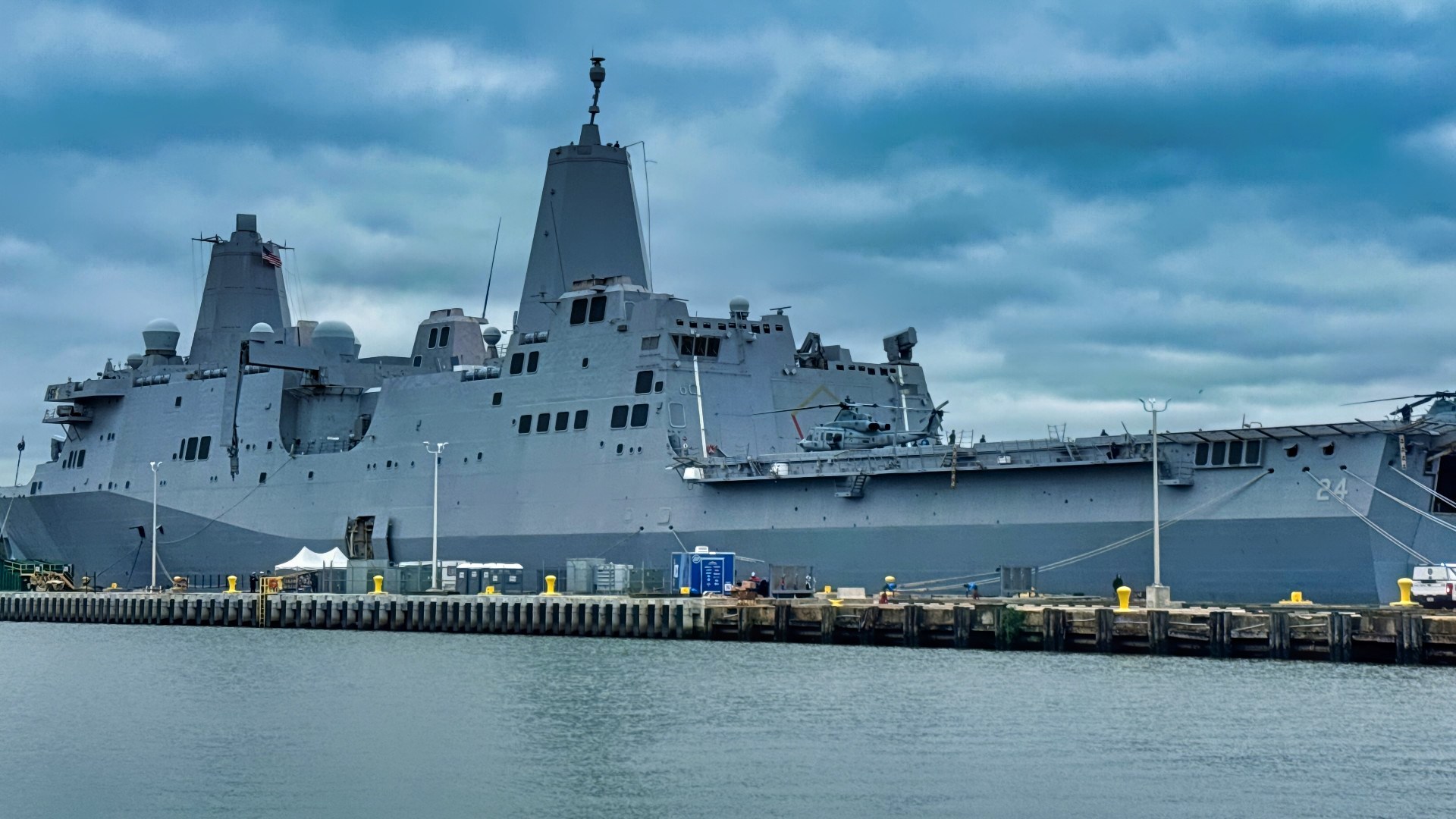Key Points and Summary – A strategic argument posits that the U.S. Navy is trapped by nostalgia for Cold War-era dominance and anxiety over China’s growing fleet size.
-The U.S. Navy no longer needs to “command the sea” but should instead pursue a strategy of “disciplined restraint,” focusing on denying sea control to rivals in key regions.

USS Lassen Deck National Security Journal Photo.
-This requires a shift away from measuring strength by hull counts and toward a more flexible, distributed, and unmanned-centric force.
-Such a fleet would be optimized for survivability and mobility, projecting power where it matters most, rather than trying to be everywhere at once.
The U.S. Navy Looks Stuck In the Past
Sea power is always an expression of national will.
Each hull launched is a statement of political intent, and a material expression of how a state seeks to project power over the planet’s oceans.
As the great powers repair and rearm their navies, Washington finds itself mired in a debate that oscillates between an all-consuming nostalgia for the zenith of Cold War-era might and near paranoiac anxiety about the threat of Chinese numerical parity.
But this contest is not about hull counts or paint schemes. It is a struggle over purpose. It is not a question of how many ships America can afford to build, but what kind of navy it needs to defend its interests, deter its adversaries, and maintain its position in a world that demands power at sea to serve not sentiment, but strategy.

USS Lassen Deck Gun U.S. Navy. Image Credit: Stephen Silver/National Security Journal.
Sea Power on Demand
Naval strategy is a means to an end. The end is always the same: to advance and defend a state’s interests at sea. In the emerging strategic environment, that end needs a more precise definition.
Old dreams of “command of the sea”—the ideal that the United States Navy should be able to secure access to every ocean for every mission—must give way to a more modest ambition.
A navy built on restraint would aim for credible deterrence rather than total control: denying rivals regional sea control, protecting U.S. interests and allies, and maintaining a capacity for regional strikes short of general war without risking the fleet or bankrupting the treasury.
Numbers can be deceiving. In ship count, the People’s Liberation Army Navy (PLAN) of China now surpasses the United States, but in meaningful terms, that is not the real contest.
China’s fleet is smaller and shorter-ranged on average than the United States’; it is optimized for near-seas operations from Taiwan to the South China Sea.
It is a navy for denial, not projection or dominance. The U.S. Navy, by contrast, remains a force of global reach: deterring in the Indo-Pacific, reassuring in the North Atlantic, patrolling the Arctic, and striking far from home.
Matching China ship for ship would be a recipe for ruin. What is important is not parity in hull counts but superiority in purpose.
The United States faces maritime competition in multiple theaters. China in the Pacific, Russia in the Arctic and North Atlantic, Iran in the Gulf, and an increasingly muscular India on its own terms.

Amphibious assault ship USS Makin Island (LHD 8) and aircraft carrier USS Nimitz (CVN 68) perform expeditionary strike force (ESF) operations, Feb. 15, 2023 in the South China Sea. Nimitz Carrier Strike Group (NIMCSG) and amphibious assault ship USS Makin Island (LHD 8) with embarked 13th Marine Expeditionary Unit are conducting joint ESF operations, representing unique high-end war fighting capabilities, maritime superiority, and power projection, demonstrating the U.S. commitment to our allies and partners in the Indo-Pacific region. (U.S. Navy photo by Mass Communication Specialist 3rd Class Kendra Helmbrecht)
The stakes in each theater are different, but all of them pose the same fundamental question: What is the Navy for? Is it a symbol of American dominance or a disciplined instrument of deterrence?
Does it need to blanket every ocean, or only appear where American interests are truly at stake? The Navy’s purpose must be carefully chosen, calibrated to its mission: to protect the sea lines of communication on which global commerce and American prosperity depend; to deter coercion by denying any rival the power to close those lines; and to ensure that no power can ever again claim “command of the sea.”
The Fleet of the Future
Purpose is the measure of naval strength. Not size, nor raw power, but coherence. How well does the fleet’s structure and composition serve its purpose, its strategy?
From destroyers to frigates to carriers, naval power is industrial base, manpower, and doctrine. Naval power cannot be improvised, conjured into being by the order of a chief or the passing of a law. Strategy must be the primary driver of structure, and any naval force without theory is nothing but hardware. Theory without force is fantasy.
If command of the sea is a dream of the past, sea control is the best approach for the future. A navy built for restraint would have a single clear purpose: to focus on achieving temporary, regional, mission-dependent superiority where U.S. interests are vital.
Deterrence would rest on credibility, not constant signaling or prolonged overwatch.
Forward defense would mean selective presence—not appearing everywhere all the time, but at times and places of advantage, where America is truly at risk and most capable of influencing the balance. That requires a fleet optimized for mobility and survivability: fast to deploy, flexible to task, and hard to target. Crewed and uncrewed platforms would combine to strike quickly and endure.
The revolution has already begun. Uncrewed surface and subsurface vehicles and unmanned aerial systems are challenging the very nature of what it means to operate persistently and lethally at sea. But the Navy’s force architecture still bears more resemblance to the Cold War than it does to the coming competition.

The French Marine Nationale aircraft carrier FS Charles De Gaulle (R91), and the aircraft carrier USS John C. Stennis (CVN 74) are underway in formation in the Red Sea, April 15, 2019. The John C. Stennis Carrier Strike Group is deployed to the U.S. 5th Fleet area of operations in support of naval operations to ensure maritime stability and security in the Central Region, connecting the Mediterranean and the Pacific through the western Indian Ocean and three strategic choke points. (U.S. Navy photo by Mass Communication Specialist Seaman Joshua L. Leonard)
The security environment today is neither as open nor as predictable as it once was. Precision hypersonic missiles, long-range anti-ship cruise missiles, and drone swarms make concentrated formations and persistent deployments vulnerable in ways that they have not been in the past.
The answer, instead, is distributed lethality: a force composed of crewed and uncrewed systems, manned and autonomous alike, that can sense, strike, and adapt more quickly than adversaries can target them.
This change is not just technological but philosophical. The Navy must shake off the superstition that bigness is strength, or that deterrence requires visible presence.
The fleet of the future will rely on integration, not mass: linking allies and capabilities across domains and theaters, and connecting the sea with land, air, space, and cyberspace into one adaptive organism. A distributed navy can project power without becoming a fixed target. It deters by being unpredictable as well as by being visible.
Disciplined Restraint in the Real World
Such an approach is also politically realistic. The American public has little appetite, and the budget little tolerance, for open-ended commitments or ever-expanding defense budgets. Strategy of disciplined restraint is politically possible because it takes limits as a given, rather than assuming boundless will or power.
It prudently focuses finite resources on where they matter most and modernizes selectively, not wholesale. It honors rather than betrays the national interest by eschewing idealism in favor of realism.
Recent shifts in U.S. defense planning already hint at this logic: recognizing that, despite historic rivalry and systemic competition, the United States remains the world’s only truly global power, and that the era of uncontested access to the sea is over.
Restraint is not retrenchment. The Navy must still underwrite alliances, deter coercion, and help maintain a favorable balance across the North Atlantic, Indo-Pacific, and Arctic. But how the Navy does so must change.
Burden-sharing with allies should replace unilateralism and overstretch. Innovation should replace complacency and inertia. America no longer needs to dominate every ocean as it did in the last century; it needs to deny others the power to dominate and preserve the freedom of action where its interests are greatest.
This is the meaning of command of the sea. The United States does not need the largest navy in history. It requires the most innovative, most adaptable, and most strategically coherent navy afloat to dominate a specific maritime area for a limited period of time. The smartest, because naval power is not measured in tonnage but imagination, and the theory of the battle won is the essence of strategy. Command of the sea is over; command of the sea is the challenge of the future.
About the Author: Dr. Andrew Latham
Andrew Latham is a non-resident fellow at Defense Priorities and a professor of international relations and political theory at Macalester College in Saint Paul, MN. You can follow him on X: @aakatham. He writes a daily column for the National Security Journal.
More Military
Nimitz-Class Aircraft Carrier USS Carl Vinson Has a Message for the U.S. Navy
The Navy’s New DDG(X) Destroyer Looks Like a Missile and Laser Machine
Germany’s Big F-35 Fighter Purchase Comes Down to 1 Word
Eurofighter Typhoon vs. JAS 39 Gripen E: Who Wins Summed up in 4 Words
JAS 39 Gripen E vs. Dassault Rafale Fighter: Who Wins in a Fight Summed Up in 4 Words










